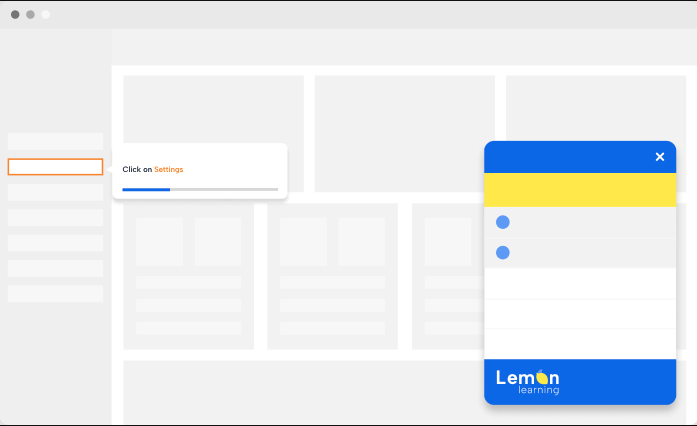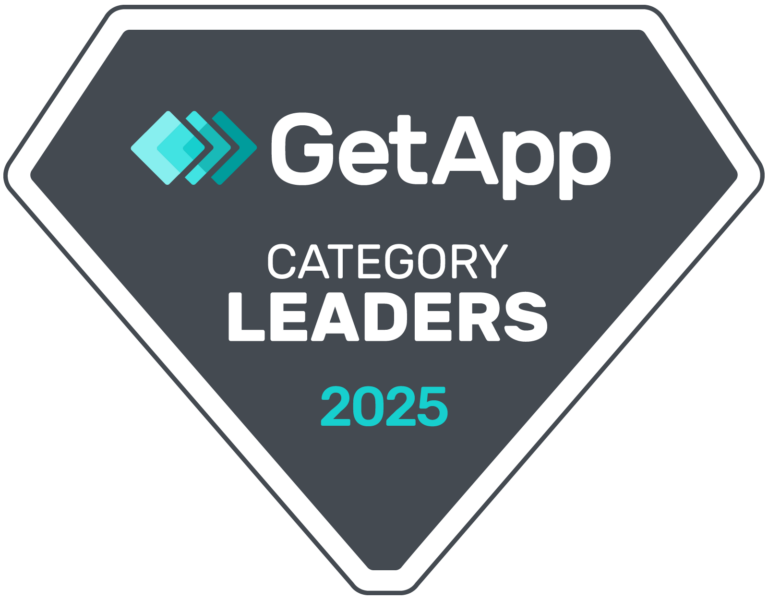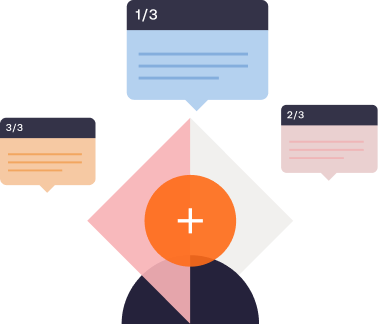Investing in a digital adoption platform (DAP) is a significant step in enabling your technology users with in-app guidance and contextual support, driving software ROI, and building your digital adoption strategy.
You’ve researched the best digital adoption platforms and shortlisted Lemon Learning as one of the finalists in your DAP buying journey. But is it the right enterprise solution for you, or would one of its competitors be a better fit?
In this article, we’ll show you the top Lemon Learning alternatives, explore its capabilities and limitations, and show you why Whatfix is the best DAP in a crowded, evolving software category.
What are the best alternatives to Lemon Learning?
- Whatfix
- Apty
- UserGuiding
- WalkMe
- Pendo
- Userpilot
What Is Lemon Learning?
Lemon Learning is a digital adoption platform that provides on-screen in-app guidance and end-user support to help users navigate SaaS applications. The platform allows organizations to create custom training content and deliver it to users within the context of their software application.
This approach is designed to improve user adoption and reduce the time and resources required for training and support. Lemon Learning is compatible with various software applications, including CRMs (Salesforce, Netsuite, SAP, etc.), ERPs (Odoo, Microsoft Dynamics 365, etc.), and learning management systems.

Lemon Learning Features
Lemon Learning’s features are what you expect of a traditional DAP. Here are its ore DAP capabilities, plus a description of how they can help you with your digital adoption, user assistance, and training needs.
- Interactive walkthroughs: Interactive walkthroughs guide users through SaaS products with step-by-step product tours.
- UX tooltips: Tooltips can expand to offer users tips, tricks, and reminders contextually.
- No-code WYSIWYG editor: Create personalized content through a drag-and-drop interface.
- User experience analytics: Track how many users interact with your guidance resources; filter user analytics with customizable Sankey diagrams, graphs, and charts.
- Smart launcher: Automatically trigger guidance resources the first time a user visits a page.
- Guidance automation: Automate which guidance resources users see (and when) using if-then conditional logic and multi-step workflows.
6 Reasons to Consider a Lemon Learning Alternative
With the WYSIWYG design capability and UX aids (tooltips, notifications, etc.) Lemon Learning offers, it’d be untruthful to suggest it’s not a powerful learning and onboarding platform.
But it might not be an great fit for your specific company’s needs, especially if you prefer an established DAP player with a wider footprint, a more extensive guidance library, external onboarding features to help coach your customers, more customer support resources, enhanced analytics capabilities, and a large customer support team.
Here are six limitations of Lemon Learning to consider before making your DAP buying decision:
1. It’s a new tool that lacks market presence
Tech startups tend to be a double-edged sword: on one hand, they ship innovative products quickly and if you’re one of their early adopters, it can give your company an edge; on the other, their technology is often untested (especially if you’re operating at enterprise scale), can lack documentation needed to adopt the platform, and are more at-risk companies compared to established vendors.
Although Lemon Learning has been operating since 2014, they have a relatively smaller footprint in the L&D industry, a smaller user base (18 reviews on G2; 25 on Capterra), and it appears they’re focused on the French market (from reviewing their product screenshots, brand videos, etc.).
It’s easy to assume therefore that they’ll have limited product documentation, and users might struggle to migrate their data or integrate with a wider range of HR and CRM providers, especially if you’re a larger company that’d love to customize your LXP with bespoke software. It also means fewer resources for product enhancements and customer support needs.
2. Limited product documentation and educational resources
Lemon Learning offers a wide range of powerful digital adoption features, including interactive step-by-step guides, a visual WYSIWYG content designer, push notifications, tooltips, and user experience analytics that can help you plot journey maps and track interactions with your training assets.
But since Lemon doesn’t as much as offer a limited free trial, there’s no way brands can test out the platform in a sandbox.
And surprisingly, for an L&D platform designed to help you teach your users how to navigate other SaaS platforms, Lemon Learning lacks a robust product marketing library that’d help you understand their product and resolve issues without contacting support frequently.
3. Lacks support of desktop applications
Lemon Learning only works on browser-based applications launched in Chromium browsers (Edge, Chrome, Brave, etc.) & and Apple’s Safari. If your require desktop application support, your users won’t be able to access Lemon’s guidance cues, meaning you’ll need to turn to a DAP that is desktop-application friendly, like Whatfix!
4. Not SCORM compliant
SCORM is an interoperability layer that allows sharing resources—videos, course scripts, audio, assessments, badges, comments, overlays, etc—between LMS and DAP platforms.
Suppose you’re thinking of switching to Lemon Learning. In that case, you’ll have to convert or recreate all your content assets from scratch—a task that’ll be tremendously difficult at best and impossible at worst, especially if you have an extensive content catalog.
Fun fact, Whatfix is the only SCORM-compliant DAP on the market.
5. Lacks survey capabilities
Surveys help you track audience sentiment and get actionable feedback, especially by narrowing your respondents’ options to a few presets. Lemon doesn’t let you inject surveys, polls, and questionnaires into the learning and onboarding experience. Whenever you have a hypothesis to test, you must make the best guess by studying user analytic patterns.
6. Built only for internal, employee adoption use cases
Everything from the customers featured on Lemon Learning’s landing pages to their brand messaging and product screenshots makes it clear that the platform is designed for in-house, internal use by enterprises guiding employees to adopt new products.
Lemon Learning is primarily designed around employee onboarding, digital transformation, and change management. It doesn’t have the nuanced design that’d make it worthwhile for external usage (i.e. if you’re looking for a solution for onboarding customers, enabling product-led growth, or providing self-help customer support).
6 Best DAP Alternatives to Lemon Learning
Beyond doubt, Lemon Learning is an exceptional digital adoption solution and its roster of features can compete with most internal adoption tools. But, if you want a platform to help you design and roll out onboarding and education programs to your product’s user base, Lemon Learning won’t cut it.
So, if you realize Lemon Learning might not be a perfect fit for your company’s needs, what alternatives should you consider instead?
1. Whatfix
Whatfix is a digital adoption platform that helps enterprises roll out new software products to their team, reduce their time-to-value, and quickly achieve a positive ROI from the SaaS investment by using contextual user experiences, step-by-step guidance, etc.

Unlike most of the Lemon alternatives on our list that are designed with either in-house or external usage in mind, Whatfix is optimized for both use cases and growing companies can use our guided onboarding tools to engage their employees and introduce them to new SaaS tools.
At the same time, product teams can employ them to coach new users and encourage adoption.
A few of Whatfix’s core capabilities and key differentiators include:
- No-code editor to create on-brand in-app guidance and support resources.
- Guide employees and end-users through your SaaS products with interactive walkthroughs, product tours, task lists, and more.
- Highlight unused features, provide helpful tips, alerts users to errors, communicate product announcements, and more with smart tips, UX beacons, pop-ups, and field validations.
- Embed a self-help widget inside your product’s dashboard that automatically crawls your knowledge repositories (knowledge base, documentation, help desk, video tutorials, etc.) so that users can search through your documentation and support resources without leaving the application.
- Analyze your user experience and fix areas of friction with cohort analysis, user flow analysis, journey mapping, and customer event tracking.
- Track which resources users are engaging the most and identify new support resources that you need to create based on insights collected from your users’ unresolved support searches or friction points.
- Create in-app surveys to collect feedback via NPS surveys, polls, and text quizzes.
- Automatically translate in-app content into 70+ languages, based on your users’ location or preferences.
- Whatfix is the world’s first SCORM 1.2 compliant in-app guidance system—you can export content modules, overlays, videos, and articles created in Whatfix into virtually any LMS.
Whatfix empowers organizations to unlock the true potential of applications across web, desktop, and mobile interfaces by enabling end-users with more engaging, intuitive user experiences. Request your Whatfix demo today!
2. Apty
Apty is a digital adoption tool that provides in-app guidance to help enterprises coach their employees to use complex SaaS applications effectively. While originally created specifically for Salesforce, it supports organizations with the following capabilities:
- Offer employees contextual guidance right inside the SaaS platforms they already use with on-screen guidance, contextual tips, tricks, and walkthroughs
- Convert walkthroughs into PDFs, PPTs, webpages, videos, and SCORM-compliant files you can use across platforms
- Use validation to notify employees when they enter inaccurate data into form fields
- Create step-by-step workflows for completing tasks and track compliance or deviations from standard rules
- Offer non-intrusive guidance with tooltips, announcement banners, and launchers built using Apty’s visual editor
- Use Apty analytics to estimate engagement and track how much your employees are consulting onboarding resources; track usage and engagement metrics such as New Users, Active Users, Average Activity session time, Activity by Segment, Error Trend, Top Activity Completion from the Insights Dashboard
Just like Lemon Learning, Apty is more or less a perfect fit for enterprises that have a large headcount, use SaaS applications (vs. on-premise solutions), and are looking to create custom training content tailored to their unique workflows and internal conventions.
3. UserGuiding
UserGuiding helps UX teams build and deploy user onboarding experience without code, using their drag-and-drop WYSIWYG editor.
Compared to Lemon Learning and Apty, both of which focus on internal digital adoption for growing organizations trying out new software tools, UserGuiding is more of a customer-facing solution for product teams who’re trying to remove ambiguity from their software offerings by guiding users step-by-step.
- Guide users through your product, and emphasize specific features or common user friction points with interactive walkthroughs
- Create searchable resource hubs where your FAQs, product docs, pre-recorded demos, and video explainers will live
- Understand how users are interacting with your guidance resources with UserGuiding Analytics
- Gauge your users’ sentiments with NPS surveys—better still, you can integrate UserGuiding with third-party form builders like Jotform, Google Forms, or Typeform for a native Q&A experience
- Highlight successive steps of your product’s discovery process with onboarding checklists
- Design different learning paths for unique user personas
- Highlight helpful content with tooltips, announcements, and popup modals, etc.
4. WalkMe
WalkMe is a digital adoption platform designed to help enterprises coach their employees into using new SaaS tools, streamline manual processes, and automate repetitive tasks. It’s right up the internal productivity alley with Lemon Learning and Apty, but with more diverse offerings and a larger community.
- Highlights manual entry errors in your CRM, ERP, etc., with validation alerts.
- Integrate with hundreds of integration and third-party applications your organization already depends on, including Zendesk, Intercom, GSuite, Slack, etc.
- Route WalkMe user engagement analytics into third-party analytics and BI tools such as Heap, Google Analytics, and Segment.
- Help your employees navigate product interfaces with guided tours.
- WalkMe is multichannel by default, and launchers, surveys, video modals render natively whether you’re on a smartphone or desktop.
5. Pendo
Pendo is a digital experience platform for guiding your audience proactively, scaling up product support, and reducing repetitive IT help tickets within your company. Unlike Lemon, Pendo is versatile and can be customized to your use case, whether you’re trying to deploy its guidance capabilities to internal users within your organization or your customers.
- Let users explore your product quickly using self-guided tours and in-app guides.
- Extend Pendo’s native functionality by integrating with the rest of your stack or building custom plugins using the platform’s APIs.
- Track engagement metrics (workflow productivity, support deflection, employee satisfaction, etc.) for your SaaS portfolio to understand which ones your employees are using (or not).
- Serve onboarding and learning experiences to specific users by targeting specific users or account types, based on analytics and metadata.
- Collect actionable feedback with customizable surveys and polls.
6. Userpilot
At a glance, Userpilot looks almost identical to UserGuiding. Both platforms add an engagement layer to SaaS products, help UX teams understand how users interact with their portfolio, and drive adoption with self-help content.
But, unlike Lemon, Apty, and WalkMe, Userpilot is targeted at product teams building onboarding experiences for their customers, and it’s not primarily for in-house usage.
- Track product usage insights, goal completions, and map your users; journeys
- Run engagement experiments with A/B testing
- Collect feedback with non-intrusive NPS polls and micro surveys right from inside your product
- Increase adoption with contextual tooltips and onboarding checklists
- Announce product updates, UX changes, webinars, special offers, and events







